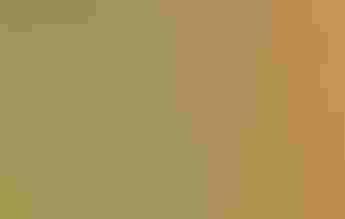
La página que intenta visitar sólo está disponible en inglés. ¡Disculpa!
The page you are about to visit is currently only available in English. Sorry!

Desirée Narango has knocked on hundreds of doors in the outskirts of Washington, D.C. to make an intimate request of homeowners: permission to count and identify the trees and shrubs in their yards. Luckily for Narango, now an ecologist at the City University of New York, they almost always said yes. In her counts, she’s found the tropical fronds of banana plants, pink-tufted crepe myrtles, scraggly oaks, and hundreds of other woody plants. But her interest in the greenery isn’t that of a botanist. “We’re thinking at the scale of a bird,” Narango says.
Narango and other researchers at the Smithsonian Conservation Biology Institute wanted to know how plants in human-managed landscapes affect the reproductive success of resident bird populations—a simple question that no one had answered before. The team’s research, published this week in Proceedings of the National Academy of Science, found only one distinction that determines if a spot is a boom or a bust for a bird population: whether it has plants native to the area.
The scientists worked with a community science group called Neighborhood Nestwatch to monitor more than a hundred nests of Carolina Chickadees, a chirpy and insect-loving songbird, across D.C.'s suburbs. Homeowners agreed to house chickadee nest boxes on their property and, once a pair of chickadees took up residence, to allow researchers to collect data on plant and bug life in their yards. The birds' foraging range is an area larger than a football field, though, and certainly bigger than any single yard. “We had to make friends with all of the neighbors so that we could sample their plant communities as well,” Narango says. Then researchers recorded every bug and insect crawling on these plants to estimate the culinary options available to nesting birds.
“Each plant in your landscape you should think of as a bird feeder,” says Doug Tallamy, an entomologist at the University of Delaware who also worked on the study. “It either has food in it, or it doesn’t.” (Carolina Chickadees aren't big users of actual bird feeders during nesting season, and, like most other birds, they do not feed birdseed to their chicks.)
Overall, Narango found way more insect food on native plants. That's because a tree or shrub will only have bugs if the creatures recognize the plant as food. If they haven’t evolved together in the same ecosystem, bugs will probably steer clear of the greenery. For example, Narango searched scores of crepe myrtle trees, a non-native popular in landscaping. “I don’t think we ever found a caterpillar,” she says. Meanwhile, a neighboring oak tree crawls with dozens or more.
The team also monitored the nest boxes. Technicians and trained volunteers counted the number of chicks at each nest and tracked the survival of parents and fledglings. Over three breeding seasons, they monitored more than 100 nests with more than 800 birds combined. Narango used these data and 13 years of past records to model the population growth of Carolina Chickadees against the makeup of plants found at their nesting sites.
Her analysis found that chickadees could only sustain their population when at least 70 percent of plants in a nesting area were native. For species like warblers, vireos, and flycatchers that are even more reliant on bug and insects, “that number is going to be higher,” Narango says.
Most yards don't make the cut.
“Almost all landscaping in yards, gardens, and public spaces are dominated by non-native species,” says Myla Aronson, who studies urban ecology at Rutgers University and was not involved in the research. She often works with land managers who recognize the danger of invasive species, but don’t understand the other downsides of non-natives species, she says. “I get that question all of the time: ‘Well, what’s wrong with non-natives?’”
The answer comes down to the food web. Nesting birds scour for the most protein-packed, fatty foods they can find, and that superfood is plant-eating bugs like caterpillars. “Those are the things that fuel that rapid growth of a baby bird,” says Karin Burghardt, an ecologist at the University of Maryland who studies biodiversity in human-managed landscapes. And those bugs need native plants.
The simple connection between bird, bug, and tree means that in places tended by people, birds are at the whim of an unwitting gardener. Right now, that’s a dangerous arrangement. "The fact that we are starving them by the way we landscape has not been seriously considered. That’s the big breakthrough," Tallamy says. That also means that a small decision on the scale of a yard can foster big changes for birds. "It empowers every individual landowner," he says. "You want to help the birds? Then control the plants that are in your landscape."
***
Start helping birds today! Just plug your zipcode into our handy native plant database to discover the best plants for birds in your area.